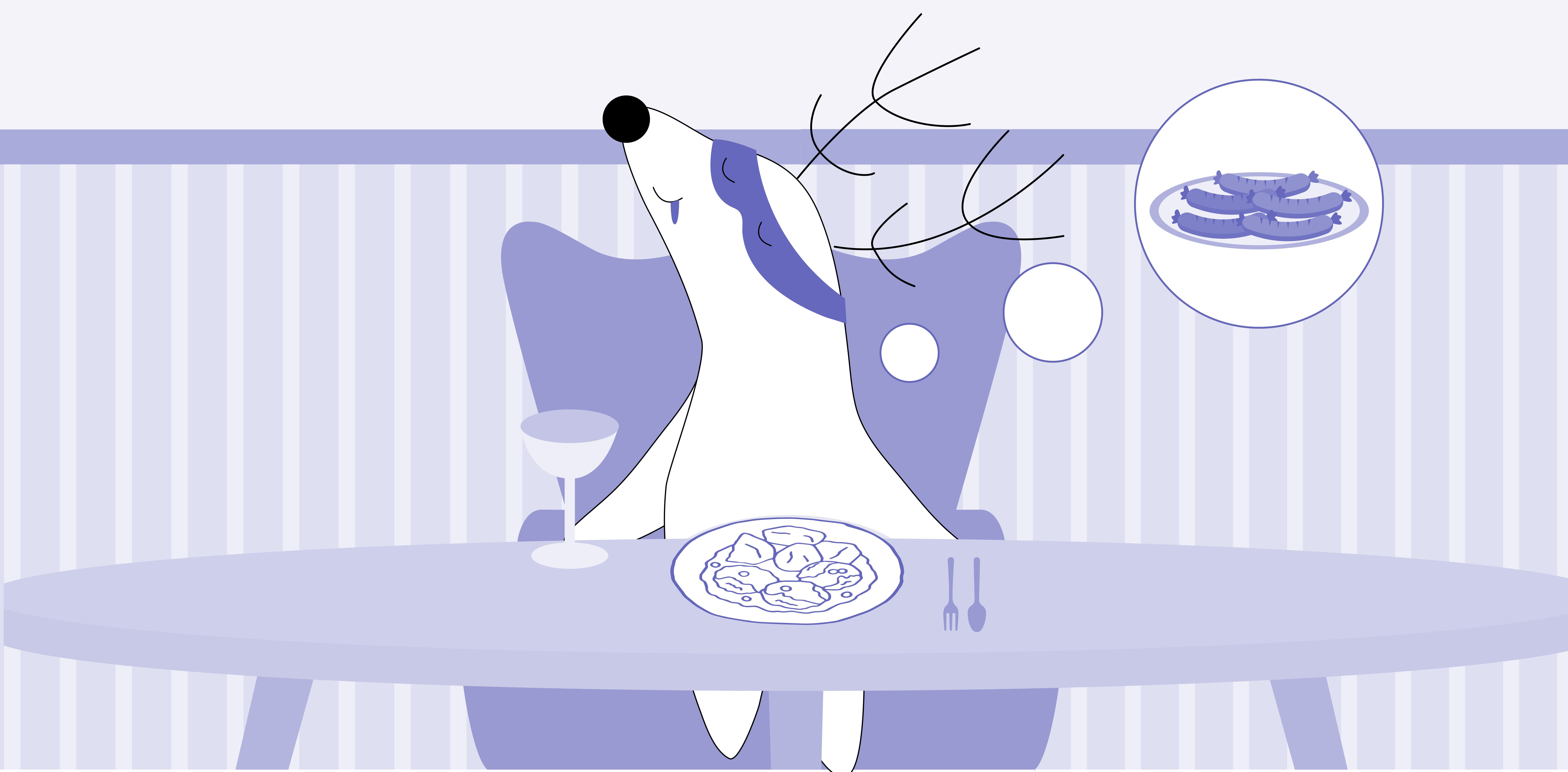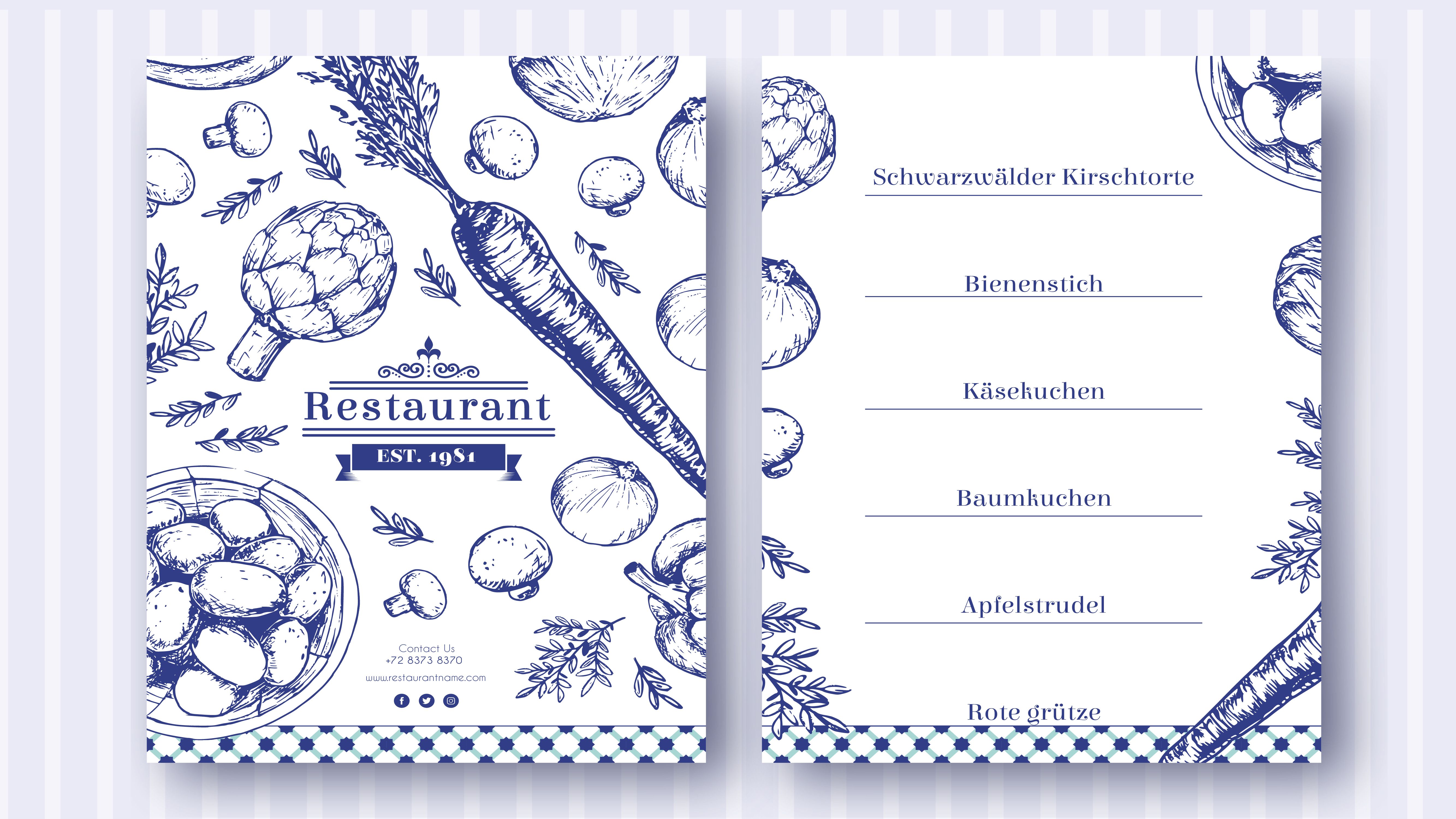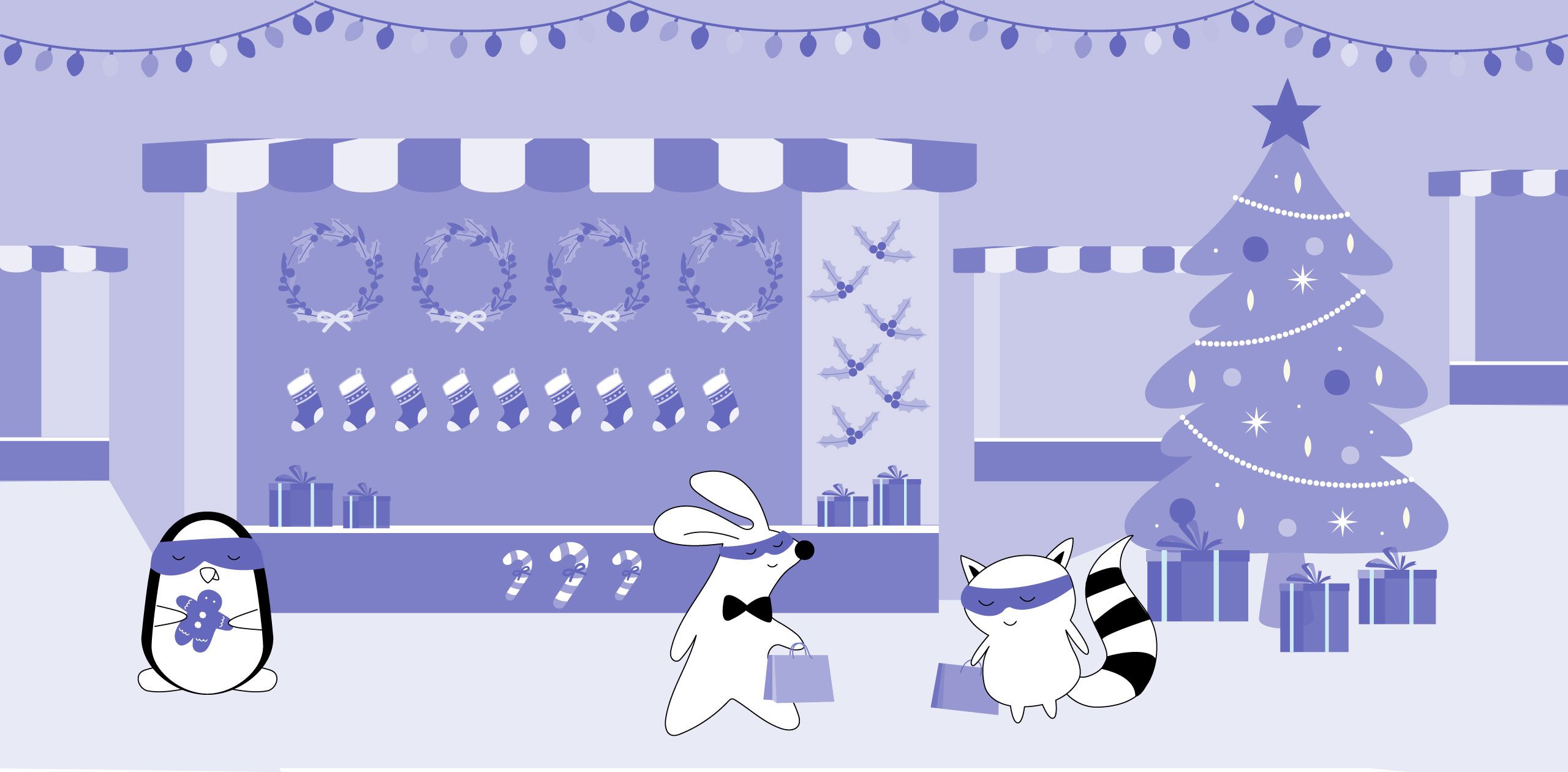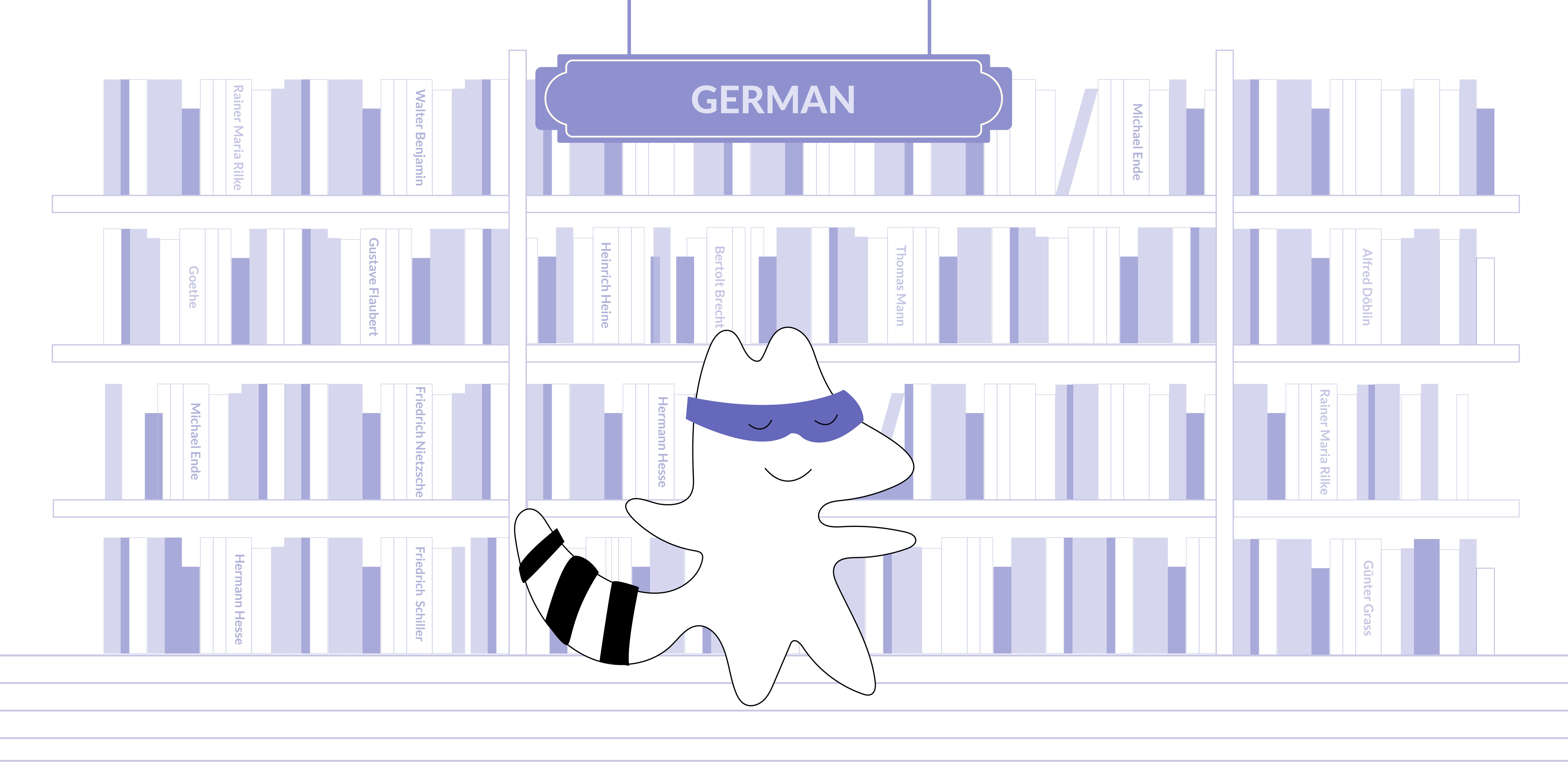
Food is a huge part of German culture, and it has hugely influenced other cultures as well. From soft pretzels with mustard to beer and Oktoberfest, you probably already know more about German food than you realize! But, how much do you know about ordering food in German?
When learning a new language, food vocabulary is critical. And, while most Germans understand some English, if you’re visiting a German-speaking country, it’s only polite to try and order in the native language.
Luckily, ordering food in German is not as complicated as it sounds. Below, we’ll talk about a few phrases to help you through the process of getting a table and ordering food, as well as some general food vocabulary and popular German dishes. Read on!
Learn German with Langster
How to Order at a German Restaurant
Being able to communicate your needs at a restaurant is very important — after all, food is necessary for life! But, even before you get to order, you must know how to request a table, ask about dietary restrictions, and much more. Read on as we explore some useful vocabulary to take you step-by-step through the process!
Arriving at the Restaurant
When you arrive at a restaurant, you will need to let the host know how many people are with you. Use some of the phrases below to request a table!
German
English
Haben Sie Platz für zwei?
Do you have a table for two?
Einen Tisch für zwei Personen bitte.
A table for two, please.

Asking About the Menu
If you have any dietary restrictions or just don’t like something, it’s important to be able to ask for this information and make requests. For example, if you are allergic to something, you can ask:
German
English
Ist das Gericht glutenfrei?
Is the dish gluten free?
Ist es möglich, das Gericht ohne…?
Is it possible to have the dish without…?
Or, if you don’t eat meat, you can ask:
German
English
Gibt es etwas Veganes?
Is there a vegan option?
Ordering a Meal
Ordering a meal in German requires using the conditional tense, because we are expressing something that could happen. In other words, it’s a possibility but not definite. So, at a German restaurant, you will use one of two phrases to say you would like something.
German
English
Ich möchte
I would like
Ich hätte gern
I'd like
Finally, it is very common for restaurants to offer takeout, so if you want to order food to go, add this phrase to your request:
German
English
Zum mitnehmen, bitte.
To take away, please.
Making Reservations
If you are visiting a more popular restaurant or going at a busy time of day, like for dinner, it might be a good idea to call and reserve a table in advance.
German
English
Kann ich einen Tisch reservieren, bitte?
Can I make a reservation, please?
Remember to let the host know how many people your reservation is for. You can either do this in your original request or after they ask you for a number.
German
English
Ich möchte bitte für zwei Personen reservieren.
I would like to make a reservation for two people, please.
Wir sind zu zweit.
There are two of us.

What to Order
Now that you know how to order, it’s time to choose what you’d like to eat! Let’s learn the German words for common ingredients you might see in dishes, as well as some of the most popular German foods.
Sections of the Menu
First, you’ll need to know how to find what type of food you want. For example, some restaurants may have different sections of the menu for breakfast, lunch, and dinner.
German
English
das Frühstück
breakfast
das Mittagessen
lunch
das Abendessen
dinner
Most restaurants also divide their menus by course.
German
English
das Hauptgericht
main course
die Vorspeise
starter
der Nachtisch
dessert
Finally, one common mistake that can confuse German language learners is the word for “menu.”
German
English
die Speisekarte
menu
das Menü
set meal
As you can see, das Menü is a false cognate. You will see it mostly used in fast food places or sometimes for special occasions where a set meal is offered — like a burger and fries combo deal.
Identifying Different Foods
Now that you know where to look on the menu to find the food you want, it’s finally time to choose your meal! Let’s learn some useful German vocabulary for food, so you can read the ingredients in each dish and decide what sounds good to eat.
German
English
das Fleisch
meat
das Rindfleisch
beef
das Schweinefleisch
pork
das Lamm
lamb
das Hähnchen
chicken
die Pute
turkey
der Fisch
fish
das Obst
fruit
der Apfel
apple
die Banane
banana
die Orange
orange
die Erdbeeren
strawberries
die Trauben
grapes
das Gemüse
vegetables
die Kartoffel
potato
die Karotte
carrot
der Champignon
mushrooms
der Kohl
cabbage
die Bohnen
beans
die Erbsen
peas
das Getränk
drink
das Wasser
water
die Milch
milk
das Bier
beer
der Tee
tea
Der Kaffee
coffee
das Cola
Coca-Cola
die Limo
lemonade

Popular German Dishes
Deciding what to eat can be a tough choice, especially when you’re not sure you know everything about a dish! But don’t fear — there are lots of popular and traditional German dishes sure to appear on most menus.
- Bratwurst — German sausage, often served with sauerkraut and mustard on a bun.
- Senf — A German-style mustard.
- Maultaschen — Large pasta dumplings filled with seasoned meat, herbs, and sometimes onions.
- Kohlroulade — A cabbage roll. Popular fillings include beef and pork.
- Schnitzel — Thinly sliced meat (usually veal or pork) covered in breadcrumbs and fried.
- Brezel — A soft pretzel. It is common to flavor them with toppings like salt, cheese, cinnamon, or nuts.
- Kartoffelknödel — Potato dumplings, often eaten with croutons or sauce.
- Bratkartoffeln — A side dish of fried potatoes, often served with bacon and onions.
- Sauerkraut — Fermented and shredded cabbage.
- Käsespätzle — Noodles topped with cheese. A very popular vegetarian side dish, especially in southern Germany.
The Bottom Line

Are you hungry yet? Learning about German cuisine is not only delicious — it’s a great way to learn more about the culture! And, now you know that ordering at a restaurant only takes a few simple phrases. Next time you visit a German restaurant, you’ll be ready to put your skills to the test by reading and ordering from the menu.
But, if you don’t feel confident or come across something you don’t know, remember that most Germans understand some English. So, you can always ask for help translating. For more practice, you can also download the Langster app to keep learning German vocabulary in fun stories! Guten Appetit!








